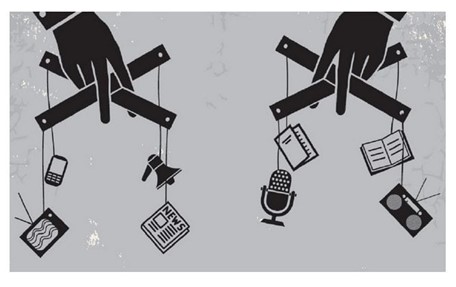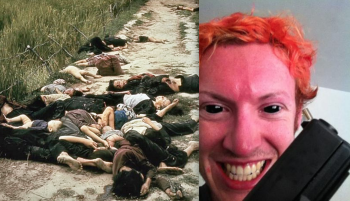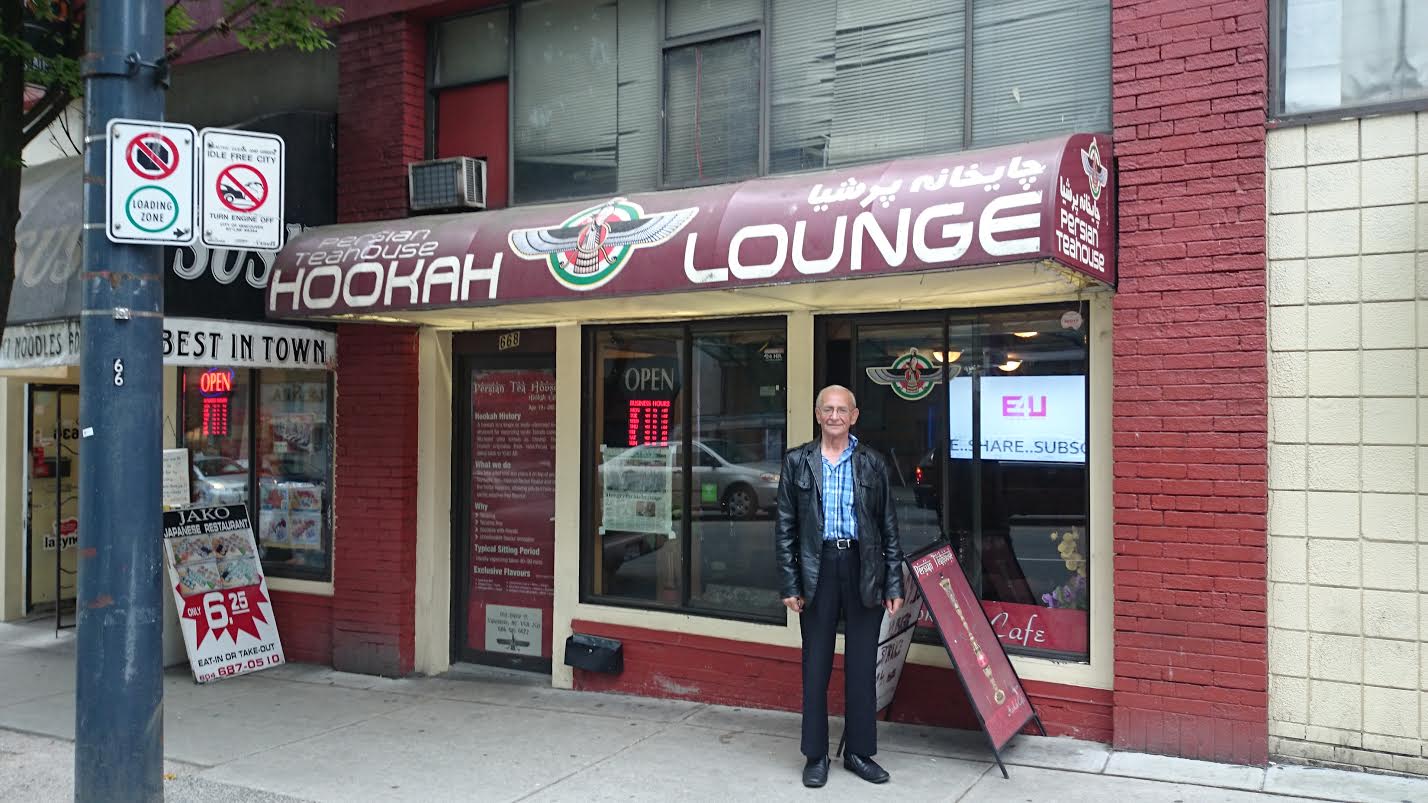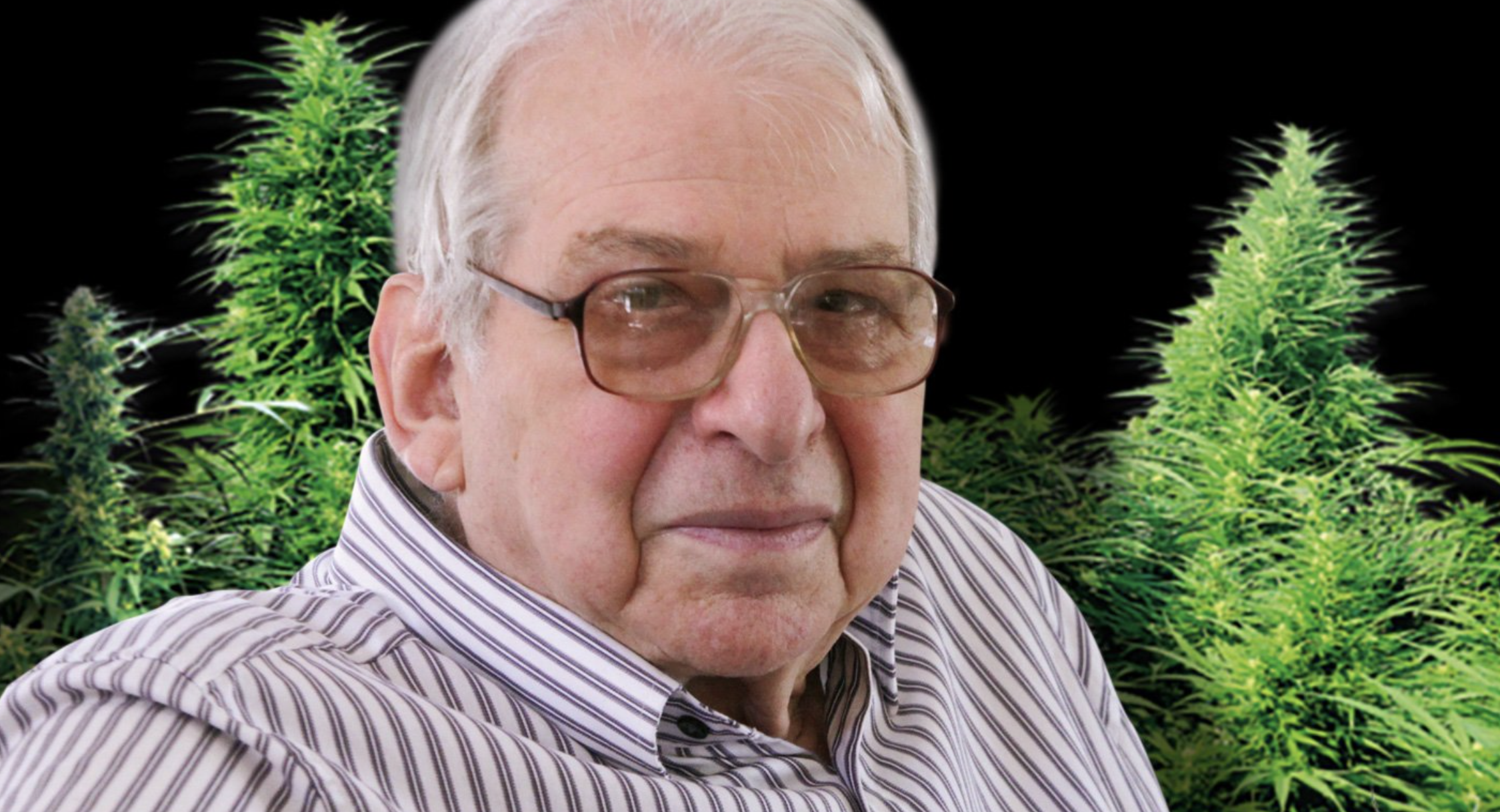New Tragedies, Same Tactics: A History of Big Media Blaming Cannabis for Mass Shootings

CANNABIS CULTURE – *This article contains images and subject matter that may disturb some readers.
“Marijuana is not going to make you go out and massacre school kids or abortion providers. This happens because we live in a country that glorifies the god of violence and his sacred warriors.”
The CIA As Organized Crime, Douglas Valentine, Clarity Press, Inc., Atlanta, Georgia, 2017, p. 173

Left: The horrific aftermath of the My Lai Massacre Right: James Holmes, perpetrator of the Aurora, Colorado theater shooting. Attempts have been made to scapegoat cannabis use as the cause of these and other tragedies. This article will tear such fallacies apart.
So the New York Post – notorious for pushing the debunked “cannabis use harms developing minds” myth is at it again – this time with the old “cannabis use contributes to mass shootings” myth.

Image from https://nypost.com/2019/03/19/stop-ignoring-the-brutal-downside-of-legal-pot/

Image from https://nypost.com/2019/08/07/the-link-between-pot-and-mass-shootings-may-be-closer-than-we-think/
Before I destroy their arguments, I would like to examine a period of history where these arguments were first made. At the moment I’m writing a book about the history of reefer madness. It will cover the last century or so of newspaper (and other media) coverage of “cannabis-related psychosis” stories. These stories are totally fabricated and based on zero evidence … and have been re-hashed every generation. My book will show how little the arguments have changed over time, and how each generation debunks these arguments, only to have their debunking fall into an Orwellian memory hole and forgotten.
I have been examining the various reefer madness myths that each decade provides, and recently completed the 1960s. At the end of the 1960s and the beginning of the 1970s, there was a concerted effort in US newspapers to blame US war crimes in Vietnam to cannabis use – in particular the most famous of all Vietnam mass shootings of civilians – the My Lai massacre (famous because it was recorded in photographs that the US public got to see). Cannabis was used extensively by US soldiers in Vietnam, and that fact combined with a few stories about how potent Vietnamese cannabis was and “abracadabra” pot got the blame:
“The facts surrounding My Lai will undoubtedly come out in the coming investigations and court martials, and likely will be given full news coverage. This is, of course, as it should be. It would not be too surprising to find that the potent Vietnamese weed did play a part in the reported incidents – just as the less potent drug has reportedly been a factor in some of the violence at home.”
“Testimony Given on MJ Use By GIs”, Bill Kennedy, Hawaii Tribune-Herald, Hilo, Hawaii, December 14th, 1969, p. 4

Image from “Testimony Given on MJ Use By GIs”, Bill Kennedy, Hawaii Tribune-Herald, Hilo, Hawaii, December 14th, 1969, p. 4

Image from “Sergeant Claims GIs Smoked Marijuana Before Massacre,” Palladium-Item, Richmond, Indiana, March 25th, 1970, p. 3
We know now that mass shootings of civilians was caused – not by marijuana psychosis – but by the military targeting civilians. These soldiers were following orders. This has been proven with massive amounts of evidence that has come out since 1969 on “free fire zones” and “the Phoenix Program“.

Image from https://www.amazon.com/Phoenix-Program-Douglas-Valentine/dp/0380709015
I know some people will doubt this evidence, so here it is for all to evaluate:
Returning veterans, affected civilians and others have said that U.S. Military Assistance Command, Vietnam (MACV), based on the assumption that all friendly forces had been cleared from the area, established a policy designating “free-fire zones” as areas in which:
- Anyone unidentified is considered an enemy combatant
- Soldiers were to shoot anyone moving around after curfew without first making sure that they were hostile.
Around 220,000 civilians killed by US/GVN forces were counted as “enemy KIA” in battlefield operations reports during battles against VC/NVA, according to Guenter Lewy due to the use of free-fire zones,.[2] There are no distinctions between enemy KIA and civilian KIA inadverdently killed in the crossfire or through deployment of heavy artillery, aerial bombardment and so-on.[3][4][5]Part of this stemmed from the doctrine requirements of producing “enemy body count” during the Vietnam War, which saw violations and statistical manipulations due to ongoing pressures from MACV on units[5].
https://en.wikipedia.org/wiki/Free-fire_zone

Image from https://www.pritzkermilitary.org/explore/museum/past-exhibits/hunting-charlie-finding-enemy-vietnam-war/alfred-batungbacal
These types of incidents, in which My Lai massacre was a perfect example, occurred frequently in most areas throughout South Vietnam. Obviously, the loss of lives among non-combatants was enormous. According to a U.S. Senate estimate, civilian casualties from such actions were 100,000 in 1965 and 300,000 by 1968.
The commission sought to give the impression that Directive 525-3 had forbidden indiscriminate airstrikes and artillery attacks on populated areas in what were called “specified strike zones”—also known within the US military as “free-fire zones.” It said one of the “significant points” in the directive was that such zones “should be configured to exclude populated areas.” But what Directive 525-3, which this writer obtained from Army historical archives, actually said was, “Specified strike zones should be configured to exclude populated areas except those in accepted VC bases.” [Emphasis added.] The Peers Commission thus exonerated Westmoreland by suppressing the crucial part of the sentence that showed exactly the opposite of what it was asserting. The directive actually allowed the creation of free-fire zones in hamlets and villages under long-term Viet Cong control such as My Lai, in which the civilian population would have no protection whatsoever. Although the official MACV directive did not explicitly state that civilians living in “specified strike zones” were not to be given any protection, it clearly implied that this was indeed the policy.
https://thevietnamwar.info/free-fire-zone/2/?vietnam-war-facts=free-fire-zone

Image from https://www.mutualart.com/Artwork/Bodies-of-women-and-children-are-shown-o/0EA06E67E4321546

“Visitors tour the War Remnants Museum in Hanoi, Vietnam. June 2009. Note: the wall photo at left is one of the images of the My Lai massacre aftermath, taken by US Army photographer Ronald Haeberle on site. Taken in the course of his official government duties, it is copyright-cleared on Wikimedia Commons — search Haeberle.” Image from https://en.wikipedia.org/wiki/War_Remnants_Museum#/media/File:Vietnam_-_Hanoi_-_War_Remnants_Museum_-_Haeberle.JPG
The best book that proves that murdering civilians was a result of official US policy, and not a result of cannabis use, was a 2017 book entitled “The CIA As Organize Crime” by esteemed academic Douglas Valentine. One of the chapters in this book was about the “Phoenix Program” – the CIA’s coordinated effort to assassinate the Viet Cong, which critics like Valentine argue convincingly that was mainly a coordinated effort to assassinate and intimidate and extort civilians, most of which had little or nothing to do with the Viet Cong.
Valentine writes;
“The program existed in relative secrecy until June 1969, when numerous South Vietnamese legislators complained in open session about being extorted, jailed and killed, but the complicit American press corps never reported it. And in the absence of any objection by the American public, the CIA had no reason to relent. It was not until late 1970, when a handful of anti-war Phoenix veterans exposed the program’s many abuses, that Congress finally launched an investigation. But even then, thanks to skillfully dissembling on the part of William Colby, the erstwhile Deputy for Civil Operations and Revolutionary Development in charge of Phoenix, the CIA was able to shirk any responsibility.” p. 59

Image from https://www.amazon.com/CIA-Organized-Crime-Illegal-Operations/dp/1538431513
Valentine provides the context that leads one to suspect that My Lai wasn’t just a result of the “free fire zone” policy, but that it was a CIA “selected assassination of civilians in the Phoenix Program” policy as well;
“Before the (Phoenix Program) operation, Provincial Reconnaissance Unit (PRU) teams, advised by US Marines detached to the CIA, were sent to locate and surveil targeted Communist cadres, known as members of the Viet Cong Infrastructure (VCI). Escape routes were studied for ambush sites and local US Army and Marine units were conscripted to act as a ‘blocking force’ to seal off the village, just as happened at My Lai on 16 March, 1968. At dawn on the day of the Phoenix operation in Thuong Xa, US military aircraft dropped thousands of psywar leaflets on the village urging the targeted VCI to surrender, and offering rewards to defectors and informers. All that happened at My Lai too.” p. 321

Image from https://www.vietnamwar50th.com/1968_tet_and_shifting_views/My-Lai-Massacre/
So by using cannabis as a convenient scapegoat, it could hide the fact that it was policy, not pot, that resulted in mass civilian casualties.
Knowing that, let’s return to the New York Post article I mentioned above, and look at it more closely:
You can’t walk through the streets of Manhattan these days without smelling weed. Even as evidence mounts of the health problems associated with marijuana, New York has insisted on joining other greedy states scrambling to legalize this deceptively dangerous drug. It makes no sense at a time when American youth is suffering from an unprecedented mental health crisis.
And, in all honesty, we cannot rule out a connection between increasing marijuana use, mental illness and the recent spate of mass shootings by disturbed young males. We don’t yet know much about the mental state or drug use of the El Paso or Dayton killers. But a former girlfriend of Dayton killer Connor Betts, 24, has indicated he was mentally ill, and two of his friends interviewed by reporters this week mentioned his previous drug use.
Just last year, the Parents Opposed to Pot lobby group tried to sound the alarm on the link between marijuana and mass shootings, compiling a list of mass killers it claims were heavy users of marijuana from a young age, from Aurora, Colo., shooter James Holmes and Tucson, Ariz., shooter Jared Loughner to Chattanooga, Tenn., shooter Mohammad Abdulazeez.
If you look closely at each of these shooters the New York Post provides as examples of “marijuana-inspired mass murders”, a certain pattern emerges:
“Holmes had been prescribed the antidepressant Zoloft (sertraline). David Healy, a psychiatrist and international authority on antidepressants, was hired as an expert witness in the SSRI shooting case. In his opinion, the killings would not have happened had it not been for the medication James Holmes had been prescribed.”
Making a Killing: The Untold Story of Psychotropic Drugging
https://www.fzl.world/drug-induced-mental-health

Image from https://www.bbc.co.uk/news/resources/idt-sh/aurora_shooting

Image from https://www.bbc.co.uk/news/resources/idt-sh/aurora_shooting
Zach Osler, a high-school classmate of Loughner’s and his closest friend, indicated that Loughner’s life began to unravel after his high-school girlfriend broke up with him. He began to abuse alcohol and other drugs, including cannabis (marijuana), cocaine, psychedelic mushrooms, LSD, and Salvia divinorum (a hallucinogen legal in Arizona).[18][19] After struggling with drugs for more than two years, Loughner gave up alcohol, tobacco, and recreational drugs in late 2008 and has not used since, according to one of his longtime friends.[20]The U.S. Army confirmed that Loughner had been rejected as “unqualified” for service in 2008.[21][22][23] According to military sources, Loughner admitted to marijuana use on numerous occasions during the application process.[9] Former classmate Caitie Parker remembers Loughner as a “pot head”.[24]
https://en.wikipedia.org/wiki/Jared_Lee_Loughner

From https://tucson.com/news/local/crime/article_70b5b03c-96f4-11e2-b7dc-0019bb2963f4.html
Abdulazeez had drug and alcohol problems, and his family tried to place him in a rehabilitation program. The New York Times reported that limits on the family’s health insurance coverage “thwarted their plan to have him go into rehab.” The investigation after the shooting revealed that Abdulazeez “had serious psychological problems.”[42] According to a family representative, Abdulazeez was abusing sleeping pills, opioids, painkillers, and marijuana along with alcohol. He had also been thousands of dollars in debt and was planning to file for bankruptcy.[8] In 2012 or 2013, Abdulazeez began therapy for his drug and alcohol abuse.[43] He had also received treatment for depression and often stopped taking his medication.[44] Following the shootings, Abdulazeez’s parents claimed that their son had been suffering from depression.[45][46]
https://en.wikipedia.org/wiki/2015_Chattanooga_shootings

Image from https://www.statesmanjournal.com/story/news/crime/2015/07/21/chattanooga-shooter-was-possibly-troubled-motive-a-mystery/30456197/
So – just to recap – of the three examples of “pot head mass murderers” given by the post, all three had used drugs other than pot – drugs that have been actually linked to aggression. Holmes used Zoloft. Zoloft is an SSRI.
SSRI’s – according to ABC news and some doctors – have an actual connection with aggression:
Yet, there have been instances in the past where such arguments with regard to the class of antidepressants known as selective serotonin reuptake inhibitors, or SSRIs, have been successful. In February 2000, 28-year-old Christopher DeAngelo was acquitted of a bank robbery charge by a Connecticut judge on the grounds that DeAngelo’s judgment was impaired by the antidepressant Prozac and the anxiety medication Xanax. Whether such a defense is scientifically feasible is still a matter of debate in the medical community. While the U.S. Food and Drug Administration has made additions to labeling on SSRIs to warn of the possibility of suicidal behaviors in children using the drugs, they have not included warnings with regard to other behavioral tendencies, such as aggression. Bernstein argued that Health Canada — the Canadian counterpart to the FDA — since May 2004 has required labeling for SSRIs to warn both adults and children of “severe agitation-type adverse events coupled with self-harm or harm to others” including “hostility” and “aggression.” Dr. Stefan Kruszewski, a Harrisburg, Pa., psychiatrist and expert witness for the defense, said he could only speak generally about SSRIs and not about the Hampson case specifically. “In a case-by-case basis, all you can do is look at the evidence,” he said. But he said that biologically speaking, the idea that antidepressants could result in unwanted behavioral changes, including violence, is definitely plausible. “To say that these drugs are incapable of inducing violence is just silly to me,” he said.

Image from https://scitechdaily.com/ssri-antidepressants-associated-with-increase-in-violent-crime-in-some-people/
And the other two mass shooters – Loughner and Abdulazeez – both used other drugs, including alcohol. Alcohol is famous for being linked to aggression, from “beer brawls” and “bar fights” to “domestic abuse”. In fact, William Shakespeare pointed it out back in 1603 in Othello, where he wrote;
“O thou invisible spirit of wine, if thou hast no name to be known by, let us call thee devil! … O God, that men should put an enemy in their mouths to steal away their brains! That we should, with joy, pleasance, revel and applause, transform ourselves into beasts! … It hath pleased the devil drunkenness to give place to the devil wrath.”
-William Shakespeare, Othello, the Moor of Venice, Act 2 Scene 3
Shakespeare’s insights match the science:
“This review used quantitative and qualitative techniques to integrate the alcohol and aggression literature. The primary purpose of the review was to determine if a causal relation exists between alcohol and aggression. The main meta-analysis included 30 experimental studies that used between-subjects designs, male confederates, and male subjects who were social drinkers. Studies using the other designs or subject populations were integrated with meta-analytic procedures when possible and summarized descriptively when not. The results of the review indicate that alcohol does indeed cause aggression.”
Bushman, B. J., & Cooper, H. M. (1990). Effects of alcohol on human aggression: An intergrative research review. Psychological Bulletin, 107(3), 341–354. https://psycnet.apa.org/record/1990-19234-001

Image from https://www.elev8centers.com/blog/the-connection-between-alcohol-and-violence
Back to the fictional narrative pushed by the New York Post;
Until we understand those links, it is nuts to enact lax laws that encourage more young people to use a drug proven to trigger mental illness.
Let’s stop right there … “proven”? If cannabis “triggers” mental illness, why is it that psychosis levels haven’t increased between the 1970s and the 1990s – when cannabis use rates have increased five-fold? The following information has “disproven” what this author and newspaper insist have been proven, but they ignore the evidence:
“Cannabis use appears to have increased substantially amongst young people over the past 30 years, from around 10% reporting ever use in 1969–70, to around 50% reporting ever use in 2001, in Britain and Sweden. If the relation between use and schizophrenia were truly causal and if the relative risk was around five-fold then the incidence of schizophrenia should have more than doubled since 1970. However population trends in schizophrenia incidence suggest that incidence has either been stable or slightly decreased over the relevant time period.”
Psychological and social sequelae of cannabis and other illicit drug use by young people: a systematic review of longitudinal, general population studies
John Macleod, Rachel Oakes, Alex Copello, Ilana Crome, Matthias Egger, Mathew Hickman, Thomas Oppenkowski, Helen Stokes-Lampard, George Davey Smith, THE LANCET • Vol 363 • May 15, 2004 • p. 1585
These findings – no increase in psychosis in spite of massive increase in cannabis use rates – have been replicated in a half-dozen or so other studies:
So now, keeping this in mind, let’s return to the New York Post article:
President Trump was right to highlight mental illness in his remarks Wednesday on the El Paso and Dayton shootings, not that his unscrupulous critics will listen, so determined are they to brand him a white supremacist. We know from a 2018 FBI report that 40% of “active shooters” in the US between 2008 and 2013 had been diagnosed with a mental illness before the attack and 70% had “mental health stressors” or “mental health concerning behaviors.”
So for anyone actually interested in preventing future such massacres, the so-called “red flag” legislation Trump is advocating to deny people with mental illness access to firearms is the most logical measure and the one most likely to be embraced by both sides of politics. But it also should apply to marijuana use, seeing as the two go hand in hand. You can’t address the youth mental health crisis without considering the effect of rising teen marijuana use.
Among American teenagers, the drug’s “daily use has become as, or more, popular than daily cigarette smoking” according to the National Institute of Health’s 2017 Monitoring the Future study. We’ve successfully demonized cigarettes while new laws send kids the message that marijuana is harmless. Yet we’ve known for more than a decade of the link between marijuana and psychosis, depression and schizophrenia.
In 2007 the prestigious medical journal Lancet recanted its previous benign view of marijuana, citing studies showing “an increase in risk of psychosis of about 40 percent.” A seminal long-term study of 50,465 Swedish army conscripts found those who had tried marijuana by age 18 had 2.4 times the risk of being diagnosed with schizophrenia in the following 15 years than those who had never used the drug. Heavy users were 6.7 times more likely to be admitted to a hospital for schizophrenia.
Another study, of 1,037 people in New Zealand, found those who used cannabis at ages 15 and 18 had higher rates of psychotic symptoms at age 26 than non-users. A 2011 study in the British Medical Journal of 2,000 teenagers found those who smoked marijuana were twice as likely to develop psychosis as those who didn’t. Another BMJ study estimated that “13 percent of cases of schizophrenia could be averted if all cannabis use were prevented.” That’s more than 400,000 Americans who could be saved from a fate worse than death. Young people and those with a genetic predisposition are most at risk, particularly during adolescence, when the brain is exquisitely vulnerable.
The evidence of harm is overwhelming, and it defies logic to think that legalizing marijuana won’t increase the harm. And yet marijuana activists pretend there is no problem and baby-boomer lawmakers, perhaps recalling their own youthful toking, ignore the science. To make matters worse, the marijuana sold at legal dispensaries today is five times more potent than the pot of the 1970s and ’80s, according to a thoroughly researched new book by former New York Times reporter Alex Berenson: “Tell Your Children: The Truth About Marijuana, Violence and Mental Health.”
Ah yes, the “they only smoked shake in the past” argument. This is total non-sense. You see, the first method of debunking this is to quote the “pot results in war crimes” article in 1969:
“Sen. Dodd said the difference between domestic marijuana and Vietnamese marijuana was ‘the difference between a glass of beer and a half-pint of whisky.’”
“Testimony Given on MJ Use By GIs”, Bill Kennedy, Hawaii Tribune-Herald, Hilo, Hawaii, December 14th, 1969, p. 4
You could probably make the case for domestic US cannabis being less potent than cannabis imported into the US, given how many US growers were novices, and how many growers from other countries had been at it for generations. Now look at any “Trans-High Market Quotations” section in the back of High Times magazine from the 1970s – most of the market back then was imports.
This “there was no potent pot back then” myth has been debunked by other writers:
“It’s actually unclear how much potency has increased over time. But even if it has, why would marijuana suddenly start causing new chronic psychotic disorders now? Hashish, which can have a THC content of more than 40 percent, has existed for centuries, and high THC marijuana has been available to those willing to pay for it since the 1970s, if not earlier.”
All the Things the New Anti-Weed Crusade Gets Horribly Wrong By Maia Szalavitz January 14, 2019 https://www.vice.com/en/article/all-the-things-the-new-anti-weed-crusade-gets-horribly-wrong/

Image from “3740 pounds of narcotics.” “BIG NARCOTICS HAUL – Egypt Intercepts Smugglers’ Boatloads of Hashish and Opium,” St. Louis Post-Dispatch, St. Louis, Missouri, November 17th, 1957, p. 217
Back to the New York Post article:
Berenson reports that the first four states to legalize marijuana, Alaska, Colorado, Oregon and Washington, have seen “sharp increases” in violent crime since 2014. If we care about mental illness, which has been spiking up at an alarming rate in recent years among young people, especially teenage boys, we should care about the convincing evidence of marijuana-induced psychosis.
This information is so misleading. Let’s look at all the facts in context:
Plenty of states, carried along by the nationwide trend, saw increases in violent crime, whatever their pot laws. And as Kleiman noted, there’s no reason to pick 2014 as a year for examining the four states in question. While Alaska and Oregon did officially legalize marijuana then, Coloradoand Washington did so in 2012. And state pot-law histories tend to be more complicated than the dates of full legalization, anyway — in Alaska and Oregon (see the previous links), it’s been decades since having small to moderate amounts of marijuana for personal use could lead to anything worse than a small fine. The idea that a state flipping over from a very liberal pot policy to a very liberal pot policy would lead to an immediate uptick in violent crime demands evidence that’s absent from Berenson’s column.
Plus, zooming in on some of these crime stats tells a more complicated story, anyway. Despite Berenson’s claim of “sharp increases in murders and aggravated assaults since 2014” in Oregon, for example, the FBI reported that the murder rate there went up a grand total of 1.0 percent from 2015 to 2016, as compared to a nationwide uptick of 7.9 percent, and then dropped by 11.6 percent between 2016 and 2017, a significantly steeper drop than in the rest of the country. If one insists on positing a tight causal relationship between pot laws and murder rates, one could just as easily argue that Oregon’s homicide trajectory has been softened by pot legalization in these years, at least relative to national trends, saving a number of Oregonians’ lives. And of course, such a focus on state laws and crime rates ignores the larger picture: “Cannabis consumption, and especially heavy cannabis consumption, has been on the rise since 1992,” said Kleiman in his email. “Over that period, national homicide rates have fallen more than 50%.”
https://nymag.com/intelligencer/2019/01/no-pot-legalization-probably-didnt-increase-homicide-rates.html
See also:
https://reason.com/2019/01/09/does-legalizing-marijuana-cause-sharp-in/
In other words, there was a recent increase in violent crime, but it wasn’t just in states that legalized, and it didn’t start in 2012, either.
Back to the New York Post article:
We didn’t have to wait for three mass shootings in two weeks to know that young males are in crisis. Youth suicide is at an all-time high and rates of serious mental illness in this country are on the rise, especially among people aged 18 to 25, the cohort most likely to use marijuana.
While it might be true that teen suicide rates have increased, it does not follow that it’s because of cannabis.
Suicide rates are higher for LGTB youth in spite of marijuana use rates being the same for both LGTB and straight youth:
“Students with same-sex partners only had significantly higher odds of use of all drugs except marijuana and inhalants, for which they did not significantly differ from students with opposite-sex partners only.”
Am J Public Health. 2014 February; 104(2): 304–310.
Sexual Orientation, Gender, and Racial Differences in Illicit Drug Use in a Sample of US High School Students
Michael E. Newcomb, PhD,? Michelle Birkett, PhD, Heather L. Corliss, PhD, MPH, and Brian Mustanski, PhD
https://www.ncbi.nlm.nih.gov/pmc/articles/PMC3935691/
The US – with a mixed history of treating it’s various minorities with respect – has a higher-than-average suicide rate, and is 34th highest rate of suicide globally. The Netherlands and Jamaica – two nations famous for cannabis tolerance – have below-average suicide rates, and rank 81st and 179th out of 183 countries, respectively.
https://en.wikipedia.org/wiki/List_of_countries_by_suicide_rate
Back to the New York Post Article:
Young people born in 1999, the birth year of the El Paso shooter, were 50% more likely than those born in 1985 to report feeling “serious psychological distress” in the previous month, according to an alarming study published this year in the Journal of Abnormal Psychology. With all we know, it’s time to put the brakes on marijuana legalization before it’s too late.
An honest review of the historical evidence indicates that cannabis is possibly the cheapest, safest and most effective relaxant and anti-depressant on planet earth:
It’s time humanity saw the New York Post’s propaganda campaign for what it truly is – genocidal scapegoating. The rhetoric of the prohibitionist is an unbroken series of lies regarding “cannabis psychosis” that has lasted 125 years, slightly more sophisticated every generation, but total bunk nonetheless. It’s a big lie – a lie to justify brutality and enslavement and the vilification of those who are guilty of nothing other than an intelligent preference for a herbal antidepressant and relaxant – a lie that is now in dire need of a massive, society-wide debunking – loudly, forcefully, non-violently, of course, but in ways that can’t be ignored … in ways that will force everyone to review the above evidence, and will make scapegoaters and stigma-foisters think twice about lying in the future.



